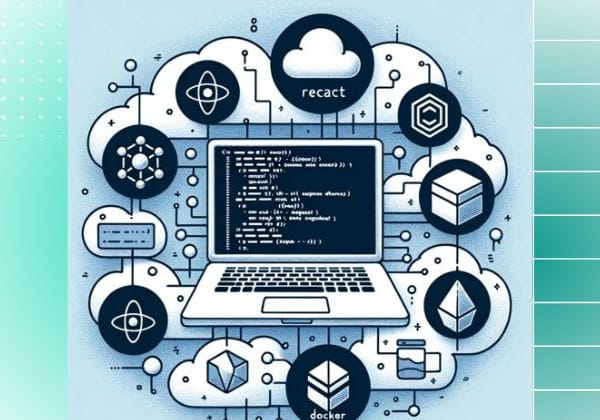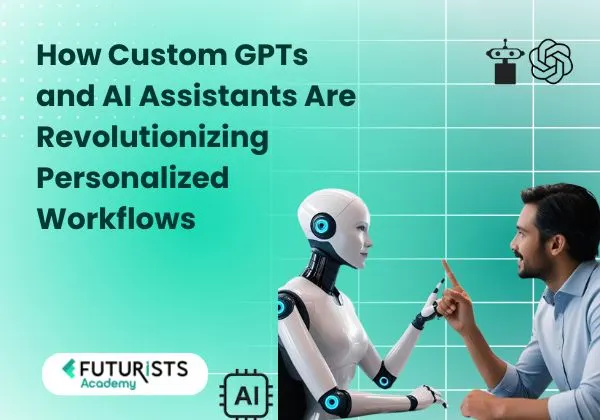Custom GPTs and AI Assistants have rapidly evolved over the past decade, moving from simple voice-activated tools to highly advanced, task-oriented digital systems. Among these innovations, GPTs (Generative Pre-trained Transformers) and custom AI assistants stand at the forefront of this revolution. These tools are no longer confined to generic functions—they’re now designed to adapt, learn, and respond according to the unique demands of individual users and organizations.
In today’s fast-paced digital environment, Custom GPTs and AI Assistants are driving a new era of personalization—now a critical element in enhancing workflow efficiency and employee engagement. As of May 2025, businesses across sectors are integrating these tools to automate operations, reduce redundancies, and deliver tailored outputs.
Custom GPTs and AI Assistants are revolutionizing workflow personalization across industries, redefining how businesses think about productivity, creativity, and operational scalability.
Understanding Custom GPTs and AI Assistants in 2025
Custom GPTs and AI Assistants, or Generative Pre-trained Transformers, are advanced machine learning models developed to understand and generate human-like language. These models, such as OpenAI’s GPT-4 and the more recent GPT-4.5, are trained on vast datasets and capable of performing a wide array of tasks, from content generation to complex problem-solving.
Custom GPTs and AI Assistants, however, take this one step further. They are specialized versions of GPTs, fine-tuned to meet the specific needs of a business or user. These assistants are trained using proprietary data, behavioral instructions, and domain-specific knowledge, allowing them to perform with greater accuracy and relevance.
Since 2023, AI assistant technology has seen exponential growth in capability, making Custom GPTs and AI Assistants an indispensable part of modern digital transformation strategies.
Enhanced natural language understanding, improved context retention, real-time integration, and secure data management are now standard features. Unlike general AI tools, custom assistants are deeply embedded into business workflows, making them an extension of the team.
Major platforms like OpenAI’s Custom GPTs, Microsoft Copilot Studio, and Google Vertex AI have made it easier than ever to build and deploy custom assistants. These platforms allow users to input private instructions, define tone, create plug-in tools, and seamlessly integrate with existing software stacks, enabling businesses to create intelligent digital co-workers rather than mere automation scripts.
Benefits of Implementing Custom AI Assistants in Workflows
Integrating custom AI assistants into workflows offers several compelling advantages. First, they significantly improve time efficiency, handling repetitive tasks such as scheduling, data entry, content drafting, and email responses—freeing up human teams for more strategic work.
They also ensure consistency in processes and output, adhering to organizational guidelines and language standards without deviation. With their personalization capabilities, these assistants can be tailored to handle highly specific tasks—whether it’s drafting legal summaries, managing marketing campaigns, or handling customer service chats.

The technology is also inherently scalable, allowing businesses to deploy assistants across departments without significant overhead. Compared to traditional workflow systems or hiring additional staff, they are cost-effective, with reduced training and onboarding time.
A 2025 global study revealed that organizations using custom AI assistants experienced an average productivity increase of 32% and a 24% improvement in workflow accuracy, highlighting their substantial real-world value.
Creating Your Custom AI Assistant: A Step-by-Step Approach
Building a custom AI assistant is more accessible than ever, but success lies in a strategic approach. Here’s a step-by-step guide:
- Identify Workflow Needs: Begin by evaluating your current workflows. Pinpoint repetitive tasks, communication bottlenecks, or any process where delays and inefficiencies occur.
- Collect and Prepare Data: Compile relevant materials like training manuals, company documents, SOPs, and FAQs. These will serve as the foundation for fine-tuning your assistant’s responses.
- Choose the Right Platform: Select an AI platform that supports private instructions, plugin tools, and integrations. OpenAI’s GPT platform is a popular choice, along with Microsoft and Google’s AI ecosystems.
- Behavioral Tuning: Use custom instructions to define how your assistant should communicate—formal, casual, technical, persuasive, etc. This ensures it mirrors your brand’s tone and decision-making logic.
- Testing and Iteration: Launch the assistant in a controlled environment. Gather feedback from your team, refine prompt responses, and continuously improve performance.
- Integration: Connect the assistant with your daily tools like Slack, Trello, HubSpot, or CRM systems. This makes AI part of the natural workflow instead of a separate tool.
- Continuous Updates: As your processes evolve, regularly retrain or update your assistant to keep it aligned with current needs. This step ensures ongoing relevance and effectiveness.
By following this process, companies can create AI assistants that not only automate tasks but also enhance the overall quality and precision of work.
Industry-Specific Applications of Custom AI Assistants
Custom GPTs are finding meaningful applications across nearly every major industry:
- Human Resources: Automate employee onboarding, handle queries on benefits, and manage leave requests through a conversational assistant.
- IT Management: Streamline service desk operations, troubleshoot common issues, and escalate only complex problems to human technicians.
- Sales Operations: Manage leads, update CRM entries, personalize outreach emails, and track pipeline progress with minimal human intervention.
- Marketing: Generate social media content, SEO blog drafts, email campaigns, and performance analytics. Futurists Academy in Guwahati trains professionals in building such AI-powered marketing engines, preparing them to lead tomorrow’s digital campaigns.
- Healthcare: Use AI for triaging patient queries, managing appointments, and explaining post-diagnosis instructions in patient-friendly language.
- Education: Deliver tailored learning paths, assist with grading, and provide 24/7 tutoring support for students based on curriculum data.
- Legal: Draft standard legal documents, summarize case law, and analyze contracts for potential risks using AI trained on legal language.
The potential is vast and expanding, demonstrating that custom AI is no longer optional—it’s a strategic advantage.
Case Study: Moderna’s Implementation of Custom GPTs
A powerful example of Custom GPTs and AI Assistants in action comes from Moderna, the biotechnology firm known for innovation. In just four months, Moderna developed over 750 custom GPTs tailored to various departments including R&D, compliance, HR, and communications. This large-scale deployment of Custom GPTs and AI Assistants enabled them to streamline internal workflows, enhance productivity, and support their 6,000 employees with intelligent, domain-specific tools.
Each assistant was programmed with department-specific knowledge and workflows, enabling them to function as true digital team members. Tasks such as regulatory documentation, meeting summaries, data synthesis, and internal help-desk support were seamlessly automated.

The impact? Over 6,000 employees experienced significant improvements in turnaround time, document accuracy, and communication clarity. Moderna’s key to success was their methodical approach—pilot testing, gathering feedback, refining, and scaling intelligently. Their journey offers a replicable model for any business aiming to adopt custom AI solutions efficiently.
Integrating Custom AI Assistants into Your Content Strategy
One of the most impactful applications of custom AI assistants is in content creation. Start by identifying key touchpoints in your strategy—blogging, newsletters, internal knowledge bases, and social media.
Use your AI assistant to automate first drafts, suggest headlines, optimize for SEO, and even plan editorial calendars. Strike the right balance between AI-generated content and human editing to maintain creativity and authenticity.
Ensure your assistant is trained on your brand tone and messaging style for consistent voice. Measure the impact of AI integration on content performance—such as engagement rates and lead generation.
Futurists Academy in Guwahati has incorporated these techniques into their digital marketing training, equipping students with real-world skills for AI-enhanced content strategies.
Best Practices for Managing Custom AI Assistants
To maximize the value of your AI assistant, it’s essential to follow some proven best practices:
- Regular Maintenance: Update your assistant with new data, revised protocols, or updated messaging to keep it current.
- Security First: Implement strict access controls and ensure data privacy compliance when feeding sensitive information into AI models.
- Human-AI Balance: Use automation for efficiency but always keep critical thinking and final decision-making in human hands.
- Team Training: Educate employees on how to interact with and get the most from AI tools. Create clear guidelines and escalation processes.
- Measure ROI: Track key metrics—time saved, output quality, resolution speed—to evaluate performance.
- Future-Proofing: Stay updated with AI developments. New features, better training methods, and smarter integrations are constantly emerging.
These practices ensure that your AI tools stay relevant, secure, and productive long into the future.
Charting the Future of Intelligent, Personalized Workflows
The shift toward intelligent, personalized workflows is no longer just a trend—it’s the new standard for competitive, forward-thinking businesses. Custom GPTs are not only improving efficiency but also elevating the quality of decision-making, communication, and customer engagement.
Organizations ready to explore AI should start small—identify a single workflow or team to pilot a custom assistant, measure results, and scale confidently. As the capabilities of AI continue to grow, the businesses that adopt early, iterate often, and train their teams well will be the ones leading their industries.
If you’re looking to explore the practical implementation of AI in marketing, operations, or strategy, Futurists Academy in Guwahati offers hands-on training and expert insights to help you navigate this evolving landscape.

